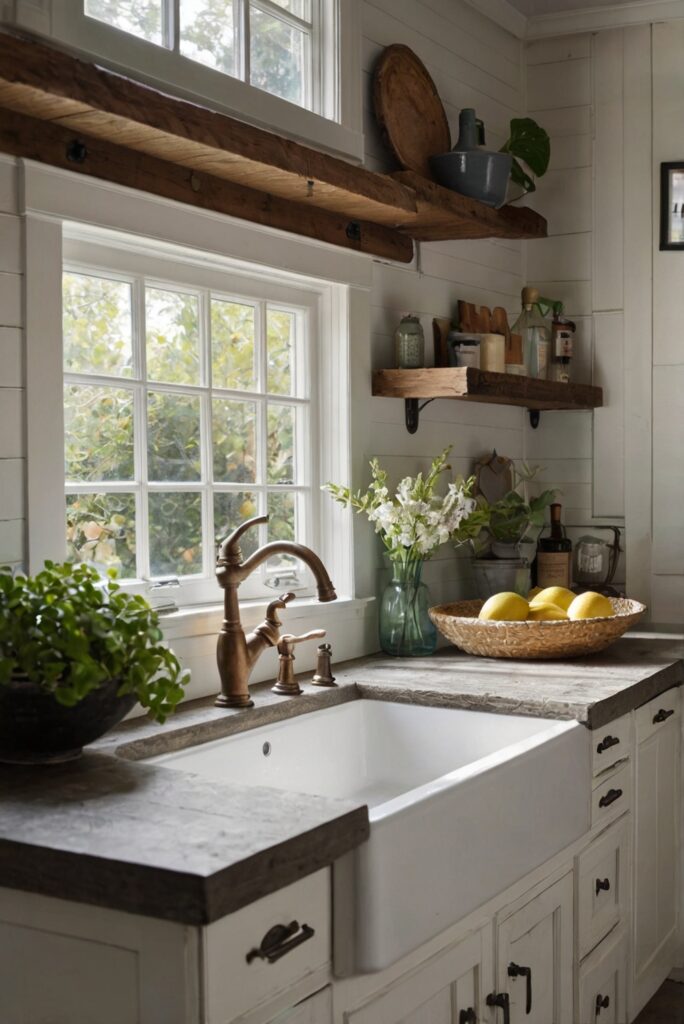Explore the essential guidelines for selecting the perfect sink size to enhance your kitchen’s functionality and aesthetics. Dive into daily interior designer routines with decor tips!
Choosing the right size sink for your kitchen is crucial for both functionality and aesthetics. Here are some top tips to help you make the best decision:
1. Consider the size of your kitchen: A large sink may overwhelm a small kitchen, while a small sink in a large kitchen can look out of place.
2. Evaluate your washing habits: If you have large pots and pans to clean frequently, a deeper sink may be more practical.
3. Measure the cabinet size: Ensure the sink you choose fits comfortably within the cabinet space allocated.
4. Think about the number of bowls: Single-bowl sinks offer more space for washing larger items, while double-bowl sinks provide flexibility for multitasking.
5. Match the sink style with your kitchen decor: From farmhouse to stainless steel, choose a sink that complements your overall design scheme.
By following these tips, you can select a sink that not only fits your kitchen space but also enhances its aesthetic appeal.
Consider the Size of Your Kitchen:
One of the most important factors to consider when choosing the right size sink for your kitchen is the size of your kitchen itself. If you have a small kitchen, you may want to opt for a smaller sink to ensure that it doesn’t overwhelm the space. On the other hand, if you have a large kitchen with plenty of counter space, you can consider a larger sink that can accommodate all your needs.
Think About Your Usage:
Another crucial aspect to keep in mind is how you will be using the sink. If you do a lot of cooking and cleaning in your kitchen, you may want to choose a larger sink with a deep basin to accommodate pots, pans, and dishes. However, if you have a smaller household and don’t use the sink as much, a smaller size may suffice.
Consider the Cabinet Size:
It’s essential to consider the size of the cabinet where the sink will be installed. The sink should fit comfortably within the cabinet space without any issues. You don’t want to end up with a sink that is too big for the cabinet or too small, leaving gaps that can collect dirt and grime.
Think About Your Cleaning Habits:
When choosing the right size sink for your kitchen, it’s crucial to consider your cleaning habits. If you tend to let dishes pile up and prefer to wash them all at once, a larger sink may be more suitable. However, if you prefer to wash dishes as you go and keep a tidy kitchen, a smaller sink may work just fine.
Consider the Overall Design of Your Kitchen:
The size of the sink should also complement the overall design aesthetic of your kitchen. If you have a modern, sleek kitchen, a large, stainless steel sink may be the perfect fit. On the other hand, if you have a more traditional kitchen with a farmhouse style, a smaller, apron-front sink may be more appropriate.
In conclusion, choosing the right size sink for your kitchen requires careful consideration of various factors such as the size of your kitchen, your usage, cabinet size, cleaning habits, and overall design. By taking these tips into account, you can select a sink that not only fits your needs but also enhances the functionality and aesthetics of your kitchen.
Consider Your Kitchen Layout:
The first step in choosing the right size sink for your kitchen is to consider your kitchen layout. Take into account the size of your countertops, the location of your appliances, and the available space for the sink. A larger kitchen may accommodate a double-bowl sink, while a smaller kitchen might be better suited for a single-bowl sink.
Measure Your Cabinet Size:
Another important tip is to measure your cabinet size before selecting a sink. The sink should fit comfortably within the cabinet space, leaving enough room for installation and any additional accessories you may want to include, such as a garbage disposal or soap dispenser.
Choose the Right Bowl Configuration:
When choosing a sink size, consider the bowl configuration that best suits your needs. Single-bowl sinks provide more space for washing large pots and pans, while double-bowl sinks offer separate areas for washing and rinsing dishes. Undermount sinks are a popular choice for a seamless look, while top-mount sinks are easier to install.
Think About Your Daily Tasks:
Consider your daily tasks in the kitchen when selecting a sink size. If you frequently cook or entertain, a larger sink may be more practical for washing dishes and food preparation. If you have limited counter space, a smaller sink can help maximize the available workspace.
Factor in Your Budget:
Finally, factor in your budget when choosing the right size sink for your kitchen. Larger sinks with additional features like multiple bowls or a deeper basin may cost more than a standard sink. Consider the long-term durability and functionality of the sink to ensure you are making a wise investment.

